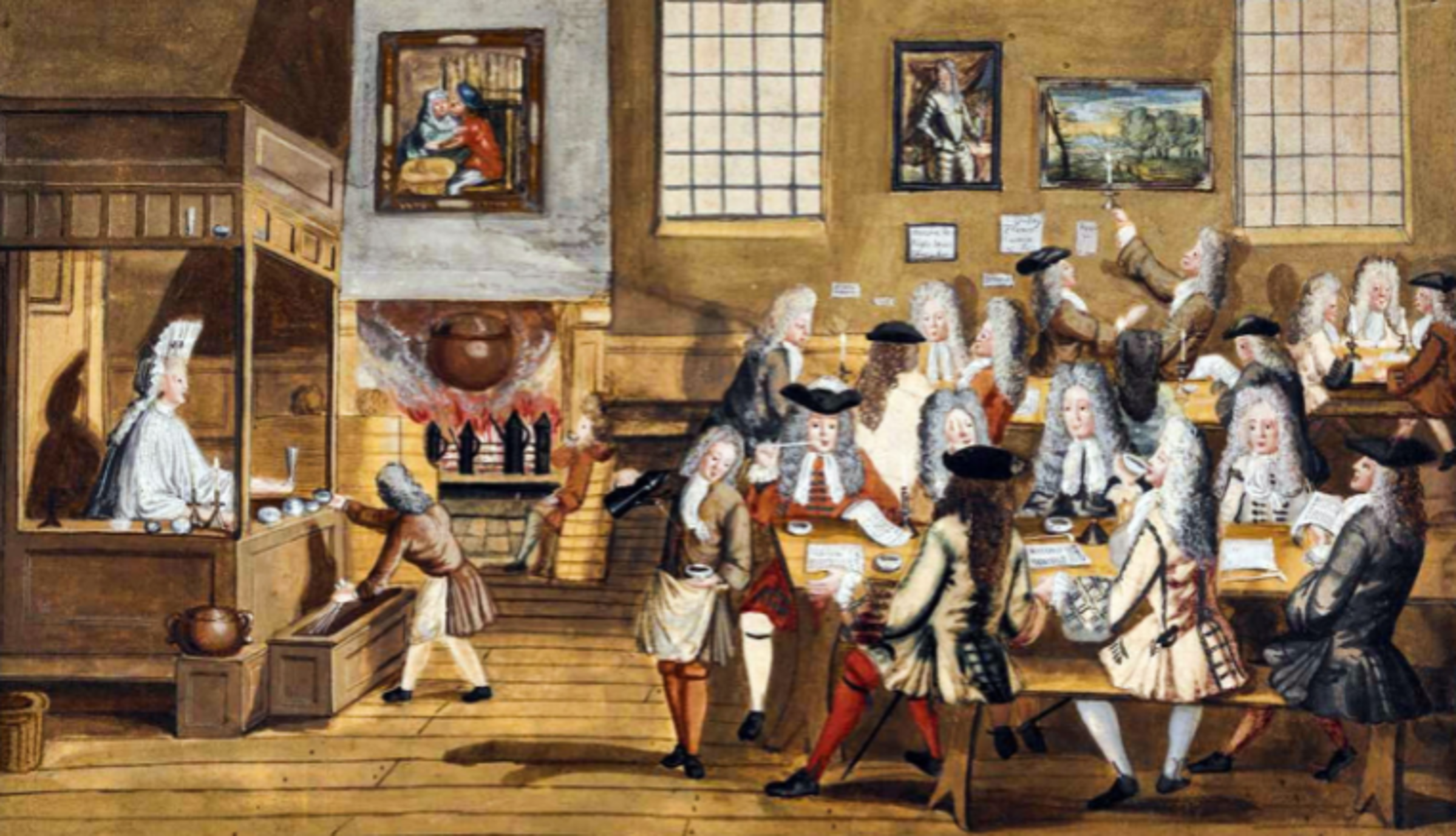
by F R Chowdhury 12 November 2021
Banking and insurance play vital role in economic development of any country. International trade, commerce and industry could not develop and function without the key role of banking and insurance. We can understand how banking developed because it provides the facility to make collective investment in viable projects. But it seems nobody is certain as to how insurance came into this world. However, most people now believe that insurance originated from the needs of the shipping world.
In early days when there was still no acceptable currency, trade was done on barter exchange. In other words traders used to exchange goods according to supply and demand. Those days the ship-owner was the trader as he would collect goods and go to another land for profitable exchange. As he makes money and become rich, he does not want to go to sea anymore and employs a captain. As the ship goes beyond visual sight, the ship-owner gets worried and remains so until the ship re-appears. Some people started taking bets on ship’s safe return. This allowed a number of people to share the risk and thereby encourage traders and ship-owners to undertake more and perhaps bigger business ventures. This is how insurance provided the cover for risk in any investment and today’s financial world reached its present shape. Today not only ships and aircrafts but also their cargoes and passengers are insured. Industrial giants like steel mills, refineries and automobile plants, off-shore rigs and plants are all insured along with historical objects and structures. Betting shops still continue to operate as a gambling center for sports and games, especially for the horse race.
Modern industrialization and transformation started from Europe. Britain had a leading role. If we look at the history of port developments – we find two components very important and they are protection from rough seas and pirates. City of London and river Thames duly provided the security to develop as a trading port and eventually become nucleus of maritime activities. Coffee was first imported in the UK in 1652, and soon became popular with elite class of people. After the great fire of London in 1666, London started to re-build with coffee shops in places where people could transact business to give economic boost to the port city. Historical records from 1688 for the first time mentioned about Edward Lloyd’s Coffee shop in Tower Street. It was popular with traders, ship-owners and captains returning from overseas voyages. Edward rented out boxes in his coffee shop for the entrepreneurial businessmen to conduct insurance or risk undertaking business. One thing Mr. Lloyd noticed that there was a great demand for information for assessment of risk. Lloyd’s Coffee House started publishing daily shipping news, informing people about departures and arrivals, the cargo aboard each ship and where other country’s fleets were operating; and where pirates were known to be active. The Lloyd’s List was first published in 1734 and the last printed version was published on 25-September-2013. However, the electronic version still continues as the world’s oldest newspaper (constantly updating every hour). By the way, I have a copy of the last printed edition of Lloyd’s List.
To the underwriters it is important to know how well the ship is and whether it is worth taking the risk. They would like to know details such as – type of ship, when and where built, materials used, when docked and inspected last etc. Mr. Lloyd hired the services of a few ship-builders and engineers and the Lloyd’s List gradually started to provide such information as well. There was clear need from the insurance world for an organization without any vested interest that could certify the health of a ship as the doctor can certify the health of a person. This eventually led to formation of Lloyd’s Register of Shipping, a non-government organization not run for profit or to protect any interest but to serve the industry with good advice and guidance to keep ships to its required standards. It is now very much like a standard institute which has its own bench-mark. If the ship meets the standards, the ship remains classed. Until this time Lloyds Coffee shop was the biggest facilitator and housed all – ship-owners/brokers, underwriters, class society, Lloyd’s List and all others connected with the business. However, to exert its own freedom as a non-partial independent organization the Lloyd’s Classification Society had to stand alone on its own and this is precisely the reason why the two businesses eventually separated out. The insurance part of the business i.e. the ship-owners and their brokers along with the underwriters were the first to move out to Royal Exchange in 1774. The Lloyd’s Register, the society for classification of ships moved out in 1786 to Lombard Street. Today the Lloyd’s Register of Ships is situated in Fenchurch Street with its offices and surveyors located almost all over the world. It has already developed the reputation, trust and confidence of all as an organization dedicated to excellence doing its job of quality control without any fear or influence and not having any interest in loss or profit for anyone. The underwriters accept the LR report as the actual condition of the ship. The flag administration trusts it to such extent that it allows the LR to carry out some of the statutory functions on its behalf. IMO (International Maritime Organization) now requires all sea-going vessels to which SOLAS Convention applies to be designed, built and maintained as per requirements of the recognized organization (relevant Class Society). Many other huge engineering projects such as rigs and plants are also classed with LR. At local level Lloyd’s Agents often trust them with damage limitation (especially protection of the environment) after any accident or incident. Today there are a number of such societies of which LR was the first.
Today the Lloyd’s House of Underwriters is simply known as the Lloyds and is located in an iconic building built with lot of glass and aluminum at 1, Lime Street. There is no other insurance market that conducts even half the business that Lloyd’s deal with. It must be understood that there is no company known as Lloyd’s Insurance Company. It is the business house that provides all the facilities for its members from both sides of the industry to negotiate risk undertaking business. It operates the same way as Lloyd’s Coffee shop operated more than 300 years ago except that it is now done under law of the land as British parliament gave the Lloyd’s system and procedures the status of an act of parliament. There are three basic principles on which it works – there must be identifiable object/ risk, all declarations must be honest and truthful and a premium must be paid to secure the cover. Ship’s insurance is referred to as Hull and Machinery as there are other arrangements to cover risk originating from cargoes, crew and passengers which I will discuss in a minute. In many cases, insurance undertaken outside Lloyd’s market want to be re-insured with Lloyd’s to have the ultimate credibility of the insurance market. With the passage of time, ship’s operation became more hazardous involving too many claims from too many corners. Some of these claims run into millions, especially those relating to protection of marine environment and removal of wrecks. No one ship-owner can pay those claims nor would the insurance market like to give cover to such unknown vast claims. The ship-owners finally found their own solution by forming mutual groups to protect each other. In the beginning the ship-owners formed the groups but now they simply join one of the existing groups. They are commonly known as P&I (protection and indemnity) clubs to protect and indemnify the owners/ members against any such claim from other parties. The risk and claims originating on cargoes, crews, passengers and other assets are also grouped with them. It is not unusual for a ship to be arrested in a port for not paying all claims on time but it is also customary for the relevant P&I Club to issue a bond or bank guarantee for the vessel to get released and continue its business while the judicial process continues in the court. The P&I being mutual and not for profit, it is aimed at rescuing a member who suddenly suffers too heavily by collective/ additional contribution from other members. Calls are subscribed instead of paying premium. Similarly ships that are moth-balled or laid up for period exceeding three months may request for return of calls. The principle on which it works is that no engagement in voyages and ventures mean no risk or hazard and as such 80 to 90 percent of the subscription may be refundable. P&I secretariat carries out the fine accounting on member’s contribution against the benefits received making sure that well maintained members enjoy the best. This is why there is always demand for memberships in clubs with quality shipping.
The mortgage industry developed on the principle of banking and insurance. Britain was the center of ships’ mortgage and housing mortgage on principle of P&I that is to say on mutual and collective membership. Many mortgage societies later turned into full commercial banks. Islamic banking and mortgage has lot of similarities with today’s world of financial services. Huge investment in off-shore rigs, structures and other scientific development required to be registered like a ship under a flag and maintained to class standards with Lloyd’s or other similar classification society so that mortgage can be raised and recorded for possible arbitration and litigation in any dispute.
In the previous paragraph all types of marine insurance was discussed so that the mariners can identify the root and purpose of each one of them. We can see how with the passage of time and with changing requirements things were modified from the days of Coffee shop. It was in 1811, the complexity of the information used by the insurance industry had evolved significantly to produce a global network of Lloyd’s Agency to make available local intelligence and expertise linked up with Lloyd’s. The main purpose was damage limitation. That is why it was necessary for the shipmaster to keep local Lloyd’s agents informed and act according to their good advice. With the passage of time this is losing its importance. There was another organization created by Lloyd’s known as Salvage Association as an in-house salvage contractors. Now it is no more considered feasible to maintain such a white elephant since services of specialized contractors are readily available. Lloyd’s Salvage form with “no cure, no pay” has served the industry for many years. It is now modified to state that all expenses undertaken to protect the environment must be paid for.
Before I conclude this write-up I shall quote the statement of Lloyd’s CEO: “For more than three centuries, the Lloyd’s market has been sharing risk to protect people and businesses, inspiring them to create a braver world”.
We have seen how the insurance business of the Coffee House first shifted out followed by the society for classification of ships. Next important thing was the Lloyd’s List which is now merged with “Informa” group and published regularly. There are two separate on-line training institutes which take the name Lloyd’s but perhaps have nothing to do with original Lloyd’s. They are Lloyd’s Maritime Academy and Lloyd’s Maritime Institute. They operate very informative courses on shipping. To the best of my knowledge present Lloyd’s Bank and its associated group has nothing to do with Lloyd’s of London.
London, 09-November-2021 <fazlu.chowdhury@btinternet.com>









